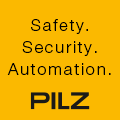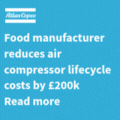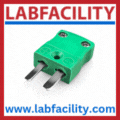
Posted to News on 8th Nov 2024, 12:30
The link between digitalisation and maintaining food safety
Food safety has never been more critical and implementing change to processes can secure this. In this article, David Sarhok, Account Manager Europe for food and beverage processing and equipment at Watlow, shares the importance of digitalisation in maintaining food safety.

According to the World Health Organisation (WHO), an estimated 600 million people fall ill each year after eating contaminated food. In the UK, contamination and allergen issues are the biggest cause of food recalls, showing a lot still needs to be done to improve around maintaining food safety. So, how can manufacturers ensure they follow best practices in ensuring our food is safe?
If we look at the production of processed food products on a large commercial scale, there is generally good practice in most factories.
The food and beverage industry has been slower to adopt a formal regulatory framework than industries such as pharmaceuticals, for example. If we look at global trends, the tendency is to hold suppliers responsible for all aspects of the supply chain, in the case of 'from farm to fork'. Even the best-managed factory depends on the quality of its raw materials. But sometimes processes can be interfered with, making vigilance along the supply chain as important as inside the processing plant.
Around the world, most food safety regimes rely on a Hazard Analysis of Critical Control Points (HACCP) methodology. This requires a supplier to evaluate risk areas in the production and supply chain and ensures measurements and tests at critical points detect problems before the product is shipped. For example, if a sterilisation process is required, a record of temperature against time must be maintained and reviewed before shipment. And with this comes an increasing focus on prevention rather than detection.
Keeping ahead of audits
Food safety management systems are multifaceted, making them complex. They will incorporate everything from hygiene and plant organisation through to maintaining records of production parameters and equipment calibration, as well as the traceability of batches in case a product is recalled.
As a result, facilities will obtain a huge quantity of data each week. But for a long time, the industry has relied on manual ways of data logging and monitoring, usually involving paper. Yet, the experience of other regulated industries is that however attractive paper might seem, digital records will always come out on top. Particularly in the case of audits by the governing regulator.
Take for example, the logging of refrigeration temperature. Good manufacturing practices (GMP) require reliable record-keeping to demonstrate that air temperatures, pack temperatures and door open and closed signals are kept within certain parameters. This is extremely important to prove that safety criteria for refrigeration during food storage and processing has been monitored and adhered to.
Digitalising records
Keeping paper records onsite without any possibility of backup is problematic in any case. For example, documents can be falsified, particularly if operators at various process steps record temperature readings in handwriting.
The solution is the digitisation of data, as well as the automated recording of process data around critical control points. Digitised data is easily transmitted from place to place and may be backed up without compromising integrity. It also creates a 'digital thread' running from 'farm to fork' that provides suppliers with instant access to critical data for audit and for internal quality check tests.
Producers seeking to implement digital data logging can opt for a system like the F4T temperature controller, which has data logging built in. With these options, users can record pre-set data, cutting down on setup time and hassle. Watlow's tools also include a list of common setups to help producers find the best way to log data that fits their needs, making implementation as easy as possible.
Food safety should be the first concern of any responsible supplier, but with over half a billion people falling ill each year to the food they consume, it's clear there is room for improvement. The industry must rid itself of all manual and paper processes, and instead implement digital solutions that are reliable, more efficient and make tracking food through the supply chain easier to monitor.






